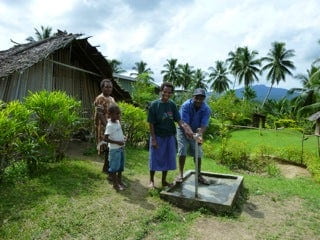COP21 SERIES Reshaping the landscape: The geography of human rights, climate change, and disasters
Jean Carmalt
When leaders gather in Paris to discuss serious measures to address climate change this December, they will be surrounded by a city and region that, in recent decades, has spent its summers grappling with deadly heat. The ongoing effects of these annual climatic threats may not be visible from the Paris-Le Bourget site in December, but they are still very much in evidence for those most affected by any natural hazard—those living with fewer resources, sparse networks of support, and greater inequality.
It is no accident that evidence of climate threats is not visible from the conference center. Just as violations of human rights are woven into the city’s geography, so too are vulnerabilities to disaster, including those associated with climate change. In cities around the world, the effects of climate change and related disasters are disproportionately felt by already disadvantaged populations. For example, pre-Katrina, New Orleans was characterized by residential racial segregation (much of which could be mapped by elevation) and an accompanying disparity in access to resources and networks of support. The inequality of this landscape contributed to violations of the right to health such as access to basic medical care and exposure to toxic environmental conditions. When Katrina struck, the waters that flowed through toxic soils became hazardous for those attempting to swim through them, while those facing financial barriers to medical care were unable to treat ongoing health complications arising from poor housing and displacement. The geographically embedded violations of health rights were not merely the background against which the hurricane played out; they were an active contributor to the impacts that resulted.
If coastal flooding in global cities offers a large scale map of how geography participates in human rights and climate change, a small scale map might show the macro changes in disease vectors as insect populations expand or contract according to changing global temperatures and weather patterns. Shifting rivers and streams, coupled with rising temperatures, will increase the threat of mosquito-borne diseases, including malaria and dengue. In South America, for example, the World Health Organization estimates that the number of people likely to be exposed to such diseases will double by 2080.1 Again, however, these risks will not play out against a static background; they instead interact with the existing inequities built into the populated landscape. Urbanization patterns and deforestation will change the sediment load in rivers, which in turn will impact everything from mosquito-breeding grounds to the migration patterns of local residents facing depleted fish populations.
The local and global scales also interact with one another, much in the same way that individual water molecules interact with larger water systems. A displaced Hurricane Katrina victim might wake up to a cup of coffee brewed from beans grown in places likely to experience increased threats of mosquito-borne disease, while the higher sedimentation levels from deforestation (tied to global agricultural production) decrease food sovereignty for the coastal populations more likely to experience flooding.
SDG 13 calls on governments to “Take urgent action to combat climate change and its impacts.”2 If governments are to follow SDG 13’s call for urgent action, therefore, the first step is to address the injustice that is already woven into, and reproduced by, small- and large-scale geographies of vulnerability. Human rights provide a helpful, and hopeful, way to reshape our landscapes around the priorities of equality, dignity, and health. Introducing rights-based reforms into urbanization and development processes includes macro measures (for example, renewed commitment to the Doha Declaration principles) in conjunction with micro measures designed to reshape the daily inequalities that lead to vulnerability.
Implementing the right to health is therefore crucial to addressing climate change because it provides a method of prioritizing dignity and equality throughout policy and governance measures. Ensuring access to regular medical care, for example, can build networks of care that make regions and individuals more able to respond to many environmental challenges, whether they are increased exposure to mosquito-borne diseases, increased frequency of flooding, or increased risk of heat stroke for elderly populations living through extreme heat. Providing respectful maternal care can promote resilience during evacuations or displacement. Introducing comprehensive water management programs into deforested regions can support local food sovereignty, which in turn can be fundamental for survival in the context of an earthquake or other sudden hazard. And policy measures that prioritize access to medicines for public health emergencies (as outlined in the Doha Declaration) can promote the health and resilience of an entire population.
The delegates currently gathering to discuss climate change therefore have a unique opportunity to reshape our existing geographies of inequality, and to promote resilience and health from the ground up. Taking a rights-based approach to climate change means that we prioritize human dignity and equality over other considerations, but it also requires a deep commitment to the active construction of geographies of equality, peace, and wellbeing at global, regional, and local levels.
Jean Carmalt, JD, PhD, is Assistant Professor of Law and Society in the Department of Political Science at John Jay College of Criminal Justice (CUNY), New York, NY, USA.
Please address correspondence to Jean Carmalt: jcarmalt@jjay.cuny.edu
References
1 Githeko, A. K., Lindsay, S. W., Confalonieri, U. E., & Patz, J. A. (2000). Climate change and vector-borne diseases: a regional analysis. Bulletin of the World Health Organization, 78(9), 1136-1147, 1140
2 Transforming Our World: the 2030 Agenda for Sustainable Development – Finalized Text for Adoption (1August), available at: https://sustainabledevelopment.un.org/content/documents/7891Transforming%20Our%20World.pdf
Previous publications by this author in HHRJ


